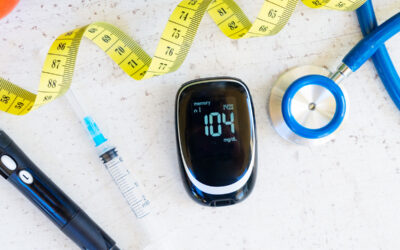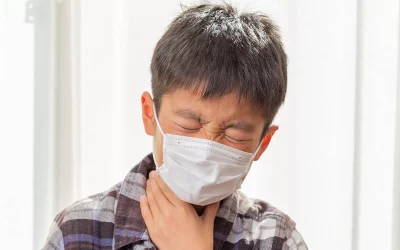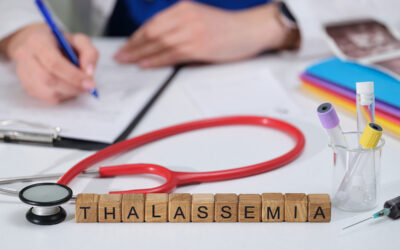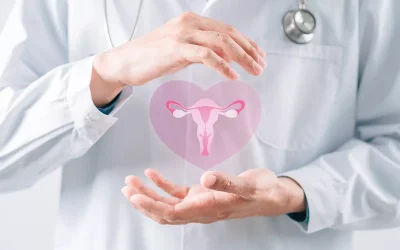Lung Cancer Awareness Month 2025: Empowering Communities through Knowledge
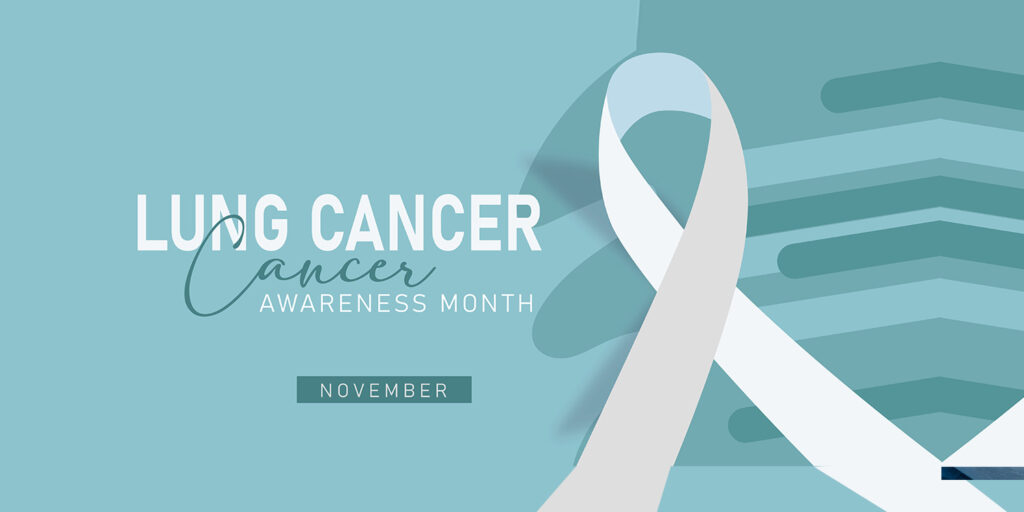
Lung cancer is one of the most prevalent cancers worldwide, responsible for nearly one in five cancer-related deaths. According to the World Health Organization (WHO), lung cancer accounts for over 2 million new cases each year, with men being more commonly affected. Despite advances in screening and treatment, late diagnosis remains a major reason for high mortality rates globally. Lung Cancer Awareness Month 2025 aims to bridge these gaps through education, community initiatives, and early detection drives. More on this topic, in this article, we will discuss the purpose of Lung Cancer Awareness Month, the causes, symptoms, and stages of lung cancer, and how early diagnosis can help improve survival rates. Let’s start by understanding the history and significance of Lung Cancer Awareness Month.
Table of Contents
ToggleHistory and Significance of Lung Cancer Awareness Month
Lung Cancer Awareness Month, observed every November, was first established to unite healthcare organisations, advocacy groups, and communities in the global fight against lung cancer. The initiative began in the United States in the early 1990s, spearheaded by patient advocacy groups such as the Lung Cancer Alliance and the American Lung Association. Over the years, it evolved into an international observance supported by medical professionals, survivors, and research foundations worldwide.
The month holds immense significance as it brings attention to one of the leading causes of cancer-related deaths globally. It aims to challenge misconceptions, promote early detection through regular screening, and encourage people to adopt preventive lifestyle measures such as quitting smoking and reducing exposure to pollutants.
The white ribbon symbol, representing lung cancer awareness, stands as a reminder of hope, resilience, and the collective commitment to improving outcomes through education, research, and compassion.
While there is no officially announced theme for Lung Cancer Awareness Month 2025, the global focus remains on promoting awareness, knowledge, and early detection to reduce lung cancer deaths and inspire hope for recovery.
What is Lung Cancer?
Lung cancer develops when certain cells in the lungs begin to grow uncontrollably, forming a lump known as a tumour. This tumour disrupts normal lung function, leading to breathing difficulties and a reduced supply of oxygen throughout the body. If not treated early, these cancer cells can spread to other parts of the body, such as the brain, liver, or bones.
Types and Stages of Lung Cancer
Lung cancer is classified based on the type of cells involved and how quickly the disease spreads. Identifying the correct type and stage helps doctors decide the most suitable treatment approach and predict possible outcomes.
Main types of lung cancer include:
- Non-Small Cell Lung Cancer (NSCLC): The most common form, accounting for nearly 85% of all cases. It tends to grow and spread more slowly and includes subtypes such as adenocarcinoma, squamous cell carcinoma, and large cell carcinoma.
- Small Cell Lung Cancer (SCLC): A more aggressive type that spreads rapidly to other organs. It is strongly linked to smoking and often requires combined treatment with chemotherapy and radiation.
Stages of lung cancer
Lung cancer is typically staged from I to IV:
- Stage I: Cancer is small and confined to the lung.
- Stage II: The tumour may have spread to nearby lymph nodes.
- Stage III: Cancer affects lymph nodes in the chest or other nearby structures.
- Stage IV: The disease has spread to both lungs or distant organs such as the liver or brain.
Staging plays a crucial role in determining treatment options and predicting recovery outcomes, reinforcing the importance of early diagnosis.
Causes and Risk Factors of Lung Cancer
While smoking remains the most significant cause, many non-smokers are also affected due to pollution, occupational exposure, or family history. Understanding these risk factors is key to prevention and timely screening.
Common causes and risk factors include:
- Tobacco smoking: The leading cause of lung cancer, accounting for the majority of cases. Even passive smoking increases risk.
- Air pollution: Prolonged exposure to polluted air, especially in industrial or urban areas, can damage lung tissue over time.
- Occupational hazards: Regular contact with carcinogens such as asbestos, diesel exhaust, or arsenic increases susceptibility.
- Genetic predisposition: A family history of lung cancer may elevate personal risk, even among non-smokers.
- Previous radiation exposure: People who have undergone chest radiation for other conditions may have a higher risk later in life.
- Unhealthy diet and lifestyle: Diets low in fruits, vegetables, and dietary fibre, combined with a sedentary lifestyle, may weaken overall lung health.
Common Symptoms of Lung Cancer
In its early stages, lung cancer may not cause noticeable symptoms, which often leads to delayed diagnosis. As the disease progresses, certain warning signs can appear, indicating changes in lung function or spread of cancer cells. Common symptoms include:
- A persistent cough that does not go away or changes in character over time
- Coughing up blood or rust-coloured sputum
- Shortness of breath or wheezing not linked to infections
- Chest pain that worsens with deep breathing or coughing
- Hoarseness or voice changes
- Unexplained fatigue or loss of energy
- Sudden, unexplained weight loss
- Recurrent chest infections such as bronchitis or pneumonia
While these symptoms can occur due to other respiratory conditions, their persistence or progression should never be ignored. Early medical assessment remains the key to accurate diagnosis and better outcomes.
When to See a Pulmonologist or oncologist?
It is important to seek medical attention if respiratory symptoms persist or worsen over time, especially when they interfere with daily activities or fail to respond to usual treatment. Early consultation with a Pulmonologist or oncologist allows timely diagnosis and better management before the condition advances.
People should consider consulting a specialist if:
- Breathing becomes progressively difficult or painful.
- Cough or chest discomfort persists beyond a few weeks despite medication.
- There is unexplained fatigue, weight loss, or general weakness.
- They have a long history of smoking or prolonged exposure to pollutants or chemicals.
- Routine scans or health check-ups show abnormalities in the chest or lungs.
How is Lung Cancer Diagnosed?
Accurate diagnosis plays a vital role in detecting lung cancer early and determining the best treatment approach. Doctors use a combination of imaging tests, tissue sampling, and laboratory analysis to confirm the presence, type, and stage of cancer.
Common diagnostic methods include:
- Imaging tests: Chest X-rays, and CT scans help detect tumours, evaluate their size, and identify whether the cancer has spread.
- Sputum cytology: Examining mucus or phlegm under a microscope can sometimes reveal cancer cells.
- Bronchoscopy: A thin, flexible tube is inserted into the lungs to view airways directly and collect tissue samples.
- Biopsy: A small tissue sample is taken from the lung or lymph node for microscopic analysis to confirm cancer type.
- Molecular and genetic testing: These tests identify specific mutations that may guide targeted therapy and personalised treatment planning.
Early diagnosis not only increases the likelihood of successful treatment but also helps patients access less invasive and more effective therapies.
Treatment Options for Lung Cancer
Treatment for lung cancer depends on the type, stage, and overall health of the patient. Doctors often combine different approaches to control tumour growth, relieve symptoms, and improve quality of life. Advancements in medical science have also made treatments more precise and less invasive than before.
Common treatment options include:
- Surgery: In early stages, cancer surgery doctors may remove the tumour or part of the lung through procedures such as lobectomy, wedge resection, or pneumonectomy.
- Radiation therapy: High-energy rays are used to destroy cancer cells or shrink tumours, often in combination with surgery or chemotherapy.
- Chemotherapy: Powerful medicines are given intravenously or orally to kill cancer cells or prevent their spread.
- Targeted therapy: These drugs act on specific genetic mutations or proteins in cancer cells, offering a personalised approach with fewer side effects.
- Immunotherapy: This modern treatment strengthens the body’s immune system to recognise and attack cancer cells effectively.
A multidisciplinary approach, combining oncology, radiology, and respiratory care, ensures that each patient receives treatment best suited to their medical and emotional needs.
Complications Associated with Lung Cancer
Lung cancer can lead to several complications, especially when diagnosed at an advanced stage or when tumours affect nearby organs. Understanding these potential challenges helps patients and caregivers prepare for better management and supportive care.
Common complications include:
- Breathing difficulties: Tumours may block airways or cause fluid buildup in the lungs, leading to shortness of breath and chest discomfort.
- Spread of cancer (metastasis): Lung cancer often spreads to the brain, bones, or liver, causing additional symptoms depending on the affected organ.
- Pain and fatigue: Persistent chest pain, body aches, and general tiredness are common due to tumour pressure or ongoing treatment.
- Infections: Cancer or its treatments can weaken the immune system, making patients more vulnerable to respiratory infections.
- Side effects of treatment: Chemotherapy, radiation, or targeted therapy may cause nausea, hair loss, or temporary changes in appetite and mood.
While these complications can be distressing, regular follow-up, supportive therapy, and symptom management can greatly improve comfort and quality of life.
Prevention and Early Detection Strategies
Although not all cases of lung cancer are preventable, several measures can significantly reduce risk and improve early detection. Awareness of lifestyle factors and regular screening for high-risk groups are the most effective ways to lower incidence and enhance survival rates.
Key preventive and early detection measures include:
- Avoiding tobacco use: The single most effective way to prevent lung cancer is to quit smoking and avoid exposure to secondhand smoke.
- Reducing air pollution exposure: Using protective masks and improving indoor ventilation can help lower long-term inhalation of pollutants.
- Maintaining workplace safety: Workers exposed to asbestos, diesel exhaust, or other industrial chemicals should follow safety protocols and use protective gear.
- Eating a nutrient-rich diet: A balanced diet with fruits, vegetables, whole grains, and foods high in dietary fibre and antioxidants supports overall lung health.
- Regular exercise: Physical activity enhances lung function and strengthens immunity.
- Undergoing screening tests: Individuals with a history of smoking or other risk factors should discuss low-dose CT scans or other screening options with their doctor.
Adopting these habits, along with regular health check-ups, can help detect lung cancer at an early stage when treatment is most effective and outcomes are more favourable.
Read More: What Does ‘Cancer is Curable if Detected in Early Stage’ Mean?
Why Choose Graphic Era Hospital for Lung Cancer Diagnosis and Care?
Facing lung cancer can be challenging, but receiving the right medical care can make a world of difference. At Graphic Era Hospital, patients receive expert-led, compassionate care supported by advanced diagnostic tools and personalised treatment plans. The hospital prioritises early detection, precise treatment, and continuous recovery support to ensure each patient receives holistic care at every stage. To deliver this level of care, Graphic Era Hospital brings together three key pillars that define its excellence in lung cancer management:
Experienced Specialists
Our team of skilled oncologists, pulmonologists, and thoracic surgeons work together to evaluate each case thoroughly. With extensive experience in diagnosing and treating lung cancer at different stages, they create personalised treatment plans that balance medical precision with individual comfort and confidence.
Advanced Technology and Minimally Invasive Procedures
At Graphic Era Hospital, our specialists use high-resolution CT imaging, bronchoscopy, and modern radiation therapy systems to ensure accurate diagnosis and targeted treatment. These advanced techniques enable faster recovery, fewer complications, and better long-term outcomes, even in complex cases.
Comprehensive Rehabilitation and Personalised Care
Our approach extends beyond treatment. Patients receive continuous care that includes pulmonary rehabilitation, nutritional counselling, and emotional support. This integrated care pathway helps them regain strength, manage side effects, and restore quality of life after therapy.
Empowering Lives Through Early Diagnosis and Care
Lung Cancer Awareness Month 2025 reminds us that knowledge, awareness, and early action can save lives. Each conversation about lung health, every routine check-up, and every effort to quit smoking brings the world one step closer to reducing preventable deaths.
At Graphic Era Hospital, the commitment to lung health goes beyond medical care; it includes educating communities, preventing disease, and supporting every patient with compassion. To consult a cancer specialist or schedule a screening at Graphic Era Hospital, call 1800-889-7351 today.
Frequently Asked Questions
When is Lung Cancer Awareness Month observed?
Lung Cancer Awareness Month is observed every November to promote education, early detection, and support for individuals affected by lung cancer across the world.
What are the early signs of lung cancer that people should not ignore?
Persistent cough, coughing up blood, unexplained weight loss, shortness of breath, and chest discomfort are among the warning signs that require prompt medical evaluation.
Can non-smokers also develop lung cancer?
Yes. While smoking is the leading cause, non-smokers can develop lung cancer due to air pollution, occupational exposure, second-hand smoke, or genetic factors.
How can lung cancer be prevented?
Prevention involves quitting tobacco, reducing exposure to pollutants and chemicals, maintaining a healthy diet rich in dietary fibre, and undergoing regular health screenings, especially for those at higher risk.
Where can I find a lung doctor near me for consultation or screening?
Individuals in Uttarakhand can consult experienced lung doctors and cancer specialists in Dehradun at Graphic Era Hospital for evaluation, diagnosis, and advanced treatment options.
What are the latest advancements in lung cancer treatment in Dehradun?
Hospitals such as Graphic Era Hospital now offer advanced diagnostic imaging, targeted therapy, and minimally invasive surgical procedures that improve precision, reduce side effects, and enhance recovery outcomes.
By Specialities
- Bariatric Surgery
- Cancer Care
- Cardiology
- Dental
- Dermatology
- Diabetes & Endocrinology
- Endocrinology and Diabetes
- ENT (Ear Nose Throat)
- Eye Care
- Gastroenterology
- Haematology
- Health Care
- Health Tips
- Hematology
- Hepatology
- Internal Medicine
- Mental Health and Behavioural Sciences
- Metabolic
- Neonatology
- Nephrology
- Neurology
- Nutrition & Dietetics
- Obstetrics & Gynaecology
- Oncology
- Ophthalmology
- Orthopaedics
- Paediatric
- Physiotherapy & Rehabilitation
- Plastic and Reconstructive Surgery
- Psychology
- Pulmonology
- Rheumatology
- Spine
- Urology
Recent Posts
- Lung Cancer Awareness Month 2025: Empowering Communities through Knowledge
- Teen Acne: How to Manage it without Damaging the Skin
- How Urbanization is Driving the Rise in Diabetes Cases in India
- The Role of Mental Wellness in Physical Health
- Childhood Obesity: Causes, Early Signs, and the Role of Paediatric Endocrinology
Need expert medical advice?
Share your details and our healthcare specialists will reach out to assist you.
By proceeding, you acknowledge and agree to our Privacy Policy, Terms of Use, and Disclaimer.





